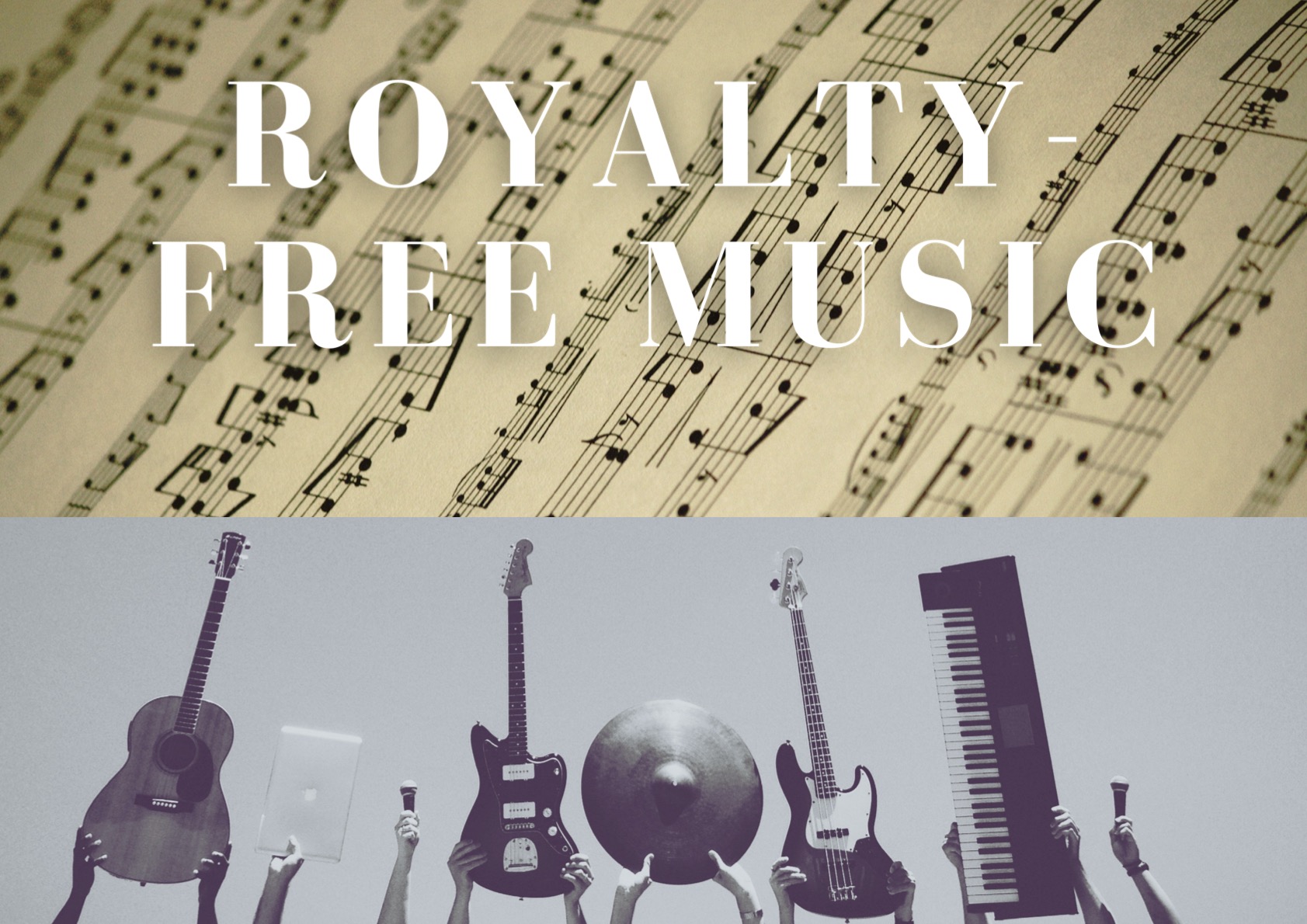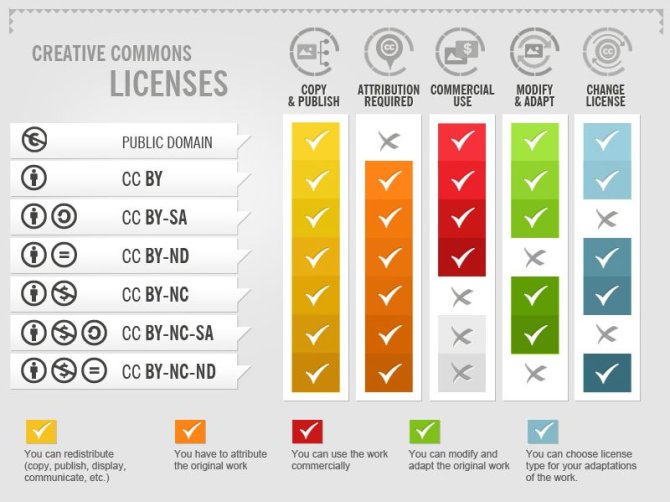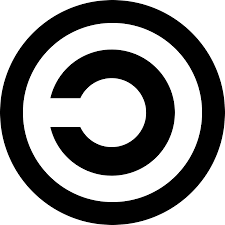
Terms and lingo
When talking about royalty-free music, it is most important to define the common concepts that are used in the lingo. A musical royalty is a payment that the copyright holders receive for the use of their intellectual property. These can be categorized for example to mechanical, public performance, synchronization, and print music royalties. Mechanical royalties work like royalties in common, where the copyright holder can get a payment whenever a CD is pressed or when the independent digital music streaming service sells their composition. Performance royalties can be collected, when the piece of music is performed, recorded, played, or streamed in front of a live public. Synchronization royalties are received, when the given musical piece is combined with visual content, for example, ads, video games, or commercials. Print music royalties are granted to the composer, whenever the tune is transcribed to sheet music and distributed further. They are paid for each copy of the notes being sold.
Copyright refers to the legal right of its owner to the given piece of intellectual property. Copyrights can further be divided for each song into either composition rights and master rights. The composition rights refer to the music and lyrics as the master copyrights incorporate also the reproduction and distribution of the recording. For a musical piece to be allowed copyrights, it must be an original piece of work and it has to show some creativity. The song also has to be recorded in a digital or analog form or be written down on a musical sheet. This is why you should always create whole songs out of your melodic ideas. If you have the copyrights to some musical piece, it means basically that you have the right to reproduce and make copies or make derivative works out of the original work. You can as well distribute, perform, play and display the copyrighted work publicly.
Music licensing refers then to the licensed use of a copyrighted musical piece. Licensing guarantees that the copyright holders get compensated, when their songs are used in particular ways. As a licensing agreement is done, then a licensor or the owner of the musical piece sells the rights to the licensee who then owns the rights to the use of the musical piece after the agreement. Public domain is the kind of artistic or creative work, to which there are no applicable intellectual property rights. These are normally those that have for example expired like in the case of the Goldberg Variations of Johann Sebastian Bach, sonnets of William Shakespeare, or movies of Georges Méliès. This is due to the rights that have been given out by the copyright owners or that these creative oeuvres were made before copyrights even existed. In European countries, the duration of the copyrights is normally counted with the formula "artist's lifetime +70 years".
A Creative Commons or CC license allows the use of copyrighted work for free in the distribution of it. The composers, in this case, give the users of the database, the rights to share, use and elaborate on a piece of music, that the artist has created. This license is flexible in that manner, that the composer of the piece can merely allow non-commercial use for the song. It protects the users of the given musical composition also from copyright infringement when the conditions in the license are followed through carefully.

CC Licenses
The CC licenses can be divided into seven subgroups, namely CC0 (Public Domain), CC-BY (BY=attribution), CC-BY-SA (SA= Share Alike), CC-BY-NC(NC=Non Commercial), CC-BY-NC-SA, CC-BY-ND(ND= No Derivatives), and CC-BY-NC-ND. Out of these the CC0, CC-BY, and CC-BY-SA are so-called free cultural licenses. As we can see in the table as well, the CC0 and CC-BY are the most open licenses. Under these forms of licensing, the music can be shared, remixed, and used for commercial purposes most flexibly. The least open of the licenses is C or the all rights reserved license. The licenses can be further combined with different subcategories of licenses when the total number of possible licenses rises to 16. All of the licenses contain the right that allows the distribution of the non-modified piece for non-commercial purposes, so if this is your goal then you can apply the compositions very freely. For more information about the different variations, you can take a peek at Creative Commons.
Notable databases for royalty-free music
If thinking by the sheer number of tracks collected in a single database, I would assume that Envato Market would be one of the best places to start the research. It is a community of musicians and audio engineers and contains over 1,5 million tracks, consisting of music, sound effects, stingers, and logo music. One of the most intriguing features of the database is that there are also 30000+ music kits. These provide the content creators to modulate the pieces as they please, by moving one bit or section to another and shuffling the progressions. The cost per one track starts from 1$, so even the low-budget producers can use the contents.
Thousands of tracks are also found in the Free Music Archive or FMA for short. With genres varying from spoken word to classical, the users are bound to find something fitting to their projects. What makes the navigation even easier is that you can filter the results by the different licenses, whether you use the track for commercial or non-commercial purposes. All of the content is free of charge and can be downloaded directly from Free Music Archive.
If you need classical music for your productions, then one of the most notable places would be Musopen. The database has thousands of well-known and a bit more unfamiliar classical tunes, that you can browse according to the mood. There is even a database for sheet music and musical apps. The free subscription does not have lossless audio downloads and you can only download 5 songs per day. With the member plan, which costs 55$ per year, you gain access to an unlimited number of downloads, lossless audio, and other extras.
Another one of the places to start to search for royalty-free music for commercial and other use would be Kevin MacLeod's internet library called Incompetech. There are over 2000 titles that can be used in your projects as long as you credit the songs in an appropriate and specified way that the composer has defined. MacLeod's philosophy is to allow his music to be applied on a maximal scale for all people alike. If you purchase the license for the use of the songs that he has created, it will cost 30$ per song, 50 $, if you are using two songs and any number of songs above that will lighten your purse for 20$ per song. MacLeod has recorded a whopping 30 studio albums and his tunes have played in several Hollywood and indie movies as well as computer games like Kerbal Space Program.

Kevin MacLeod
MacLeod has also created a database that gathers public domain artists and their songs under one webpage called Freepd. You pay $10 for downloading all the mp3:s and $25 to download mp3:s and WAV:s and you are free to use the content in whichever way you want without the need for attribution. At the moment the number of WAV:s is reaching over 100 and the number of mp3:s past 800. There is also a free version available, but it does not include the creative commons license. You can not either buy exclusive rights for the tracks. And if you are a composer, the page accepts donations in the form of musical pieces, of which you will naturally get your share by the means of monetization.
Other good resources
MacLeod recommends some resources from which to find music for your productions. Here are some picks from the list:
FilmMusic is a page that Sascha Ende has put up for finding royalty-free music for movie projects. There are many moods that you can choose from varying from horror soundtracks to comical tunes and the description of the tracks is made with emojis, which ease the choice-making. The files are in .mp3 and .wav format. Note, however, that you can't sample or chop the music, but you have to use the whole track if you decide to use songs from this page. There are also PREMIUM tracks that are not free of charge, but you have to purchase a license if you want to use these tunes.
Brett Van Donsel Music contains lots of tracks based on several genres by Brett Van Donsel. The selection includes a lot of guitar tunes, although also piano and synthesizer-driven songs are available. These can be purchased at a low cost, starting from 6 $ per song package. The files are in high-quality AIF format, so you will get a great-sounding background for your projects. For non-accredited purposes, a license can be bought for $30. Props also for the humoristic layout.
Teknoaxe has a plethora of tunes to select from. The genres vary from funk to drum and bass and world music to chiptune, so you will find something to fit your production. Kongano has as well a load of tunes, that cover several genres and are made by a Finnish composer called Eino Toivanen.
Ben Sound is a site that the French composer Benjamin Tissot has provided and it has several hundreds of songs that are free to use in your projects. The user-friendly webpage is easy to navigate and has several categories or genres to choose from and there are detailed descriptions on each track.
Additional good sites for finding music to your productions, just to name a few include YouTube Audio Library, Audionautix, ccMixter, SoundCloud, Audioblocks, Soundotcom, Jamendo, AShamaluevMusic, Adamvitovsky, Artlist, and DL Sounds. Take your pick and discover!

Copyleft symbol
A copyleft license gives the users the right to without a charge to disperse and alter the intellectual property. It requires that the same rights are maintained for the secondary works that were created based on the original. This type of licensing can be found for instance in computer software, art, documents. In a software distribution, this habitually means that the developers have to provide the source code files with the product. Basically the use of the license requires that everybody that uses the software or musical piece be granted the equal rights as long as these secondary versions are put under the same license and are open for modification, dissemination, usage and sharing.
Summary
The producers normally choose to use royalty-free music because of the ease of the process. For a small charge, the composer gives out the rights to use the musical piece in a predetermined fashion in a diverse range of productions. Usually, these connect moving images with audio and especially the larger companies also offer sound effects packages as extras on the side. Some software allows a higher level of modification of the musical piece to fit almost any kind of audiovisual representation. In copyleft, these rights have to be forwarded to other users as well.
Apart from the aforementioned sources, the places to find royalty-free music that one can apply for commercial and non-commercial purposes, are quite easy to find. All of the databases have their practices about crediting and some also offer subscription plans to get the most of the content. There are modular solutions that offer the shuffling and remixing of the content creatively and there are solutions that acquire the use of the given tunes in their original form and duration. The use of these differs by the goals of the project. Strolling through the different options gives the user a wider scope on the quality and type of the compositions and it is made very easy to find the perfect fit for many kinds of purposes.
The most important thing in the use of royalty-free music databases is to remember that royalty-free is not free from copyrights. These can occur in the musical sense normally in the making, distribution, and sales of CDs or other audio mediums including the digital media and music and lyrics on sheet music. It means that you always have to credit the composers in your productions if you are using their songs in them. Public domain music is a form of copyright-free music and should be used instead if the attribution is not done for some reason. When crediting the composer, every web page has its dedicated practice to do this, which you should follow to avoid problems.
References
Catalogue Lumière. (2017, November 21). Retrieved May 05, 2021, from www.catalogue-lumiere.com/faq/.
Copyleft. (2021, May 04). Retrieved May 06, 2021, from en.wikipedia.org/wiki/Copyleft.
Creative Commons. (2021). Retrieved May 07, 2021, from www.creativecommons.org/.
Creative Commons license. (2021, May 04). Retrieved May 03, 2021, from
en.wikipedia.org/wiki/Creative_Commons_license#Types_of_license.
Thomas A. Crowell. (2007) The Pocket Lawyer for Filmmakers: A Legal Toolkit for Independent Producers. Elsevier Inc.
Donsel, B. V. (2021). Brett Van Donsel Music. Retrieved May 03, 2021, from
brettvandonselmusic.com/.
Ende, S. (2021). FilmMusic. Retrieved May 04, 2021, from filmmusic.io
Envato Market. (2021). Retrieved May 04, 2021, from audiojungle.net.
Free Music Archive. (2021). Retrieved May 3, 2021, from freemusicarchive.org/home.
Freepd. (2021). Retrieved May 04, 2021, from freepd.com.
Haskins, J. (2021, March 22). How to copyright music. Retrieved May 04, 2021, from
www.legalzoom.com/articles/how-to-copyright-music.
Kenton, W. (2020, September 13). Copyright definition. Retrieved May 05, 2021, from
www.investopedia.com/terms/c/copyright.asp
MacLeod, K. (2021, April). Incompetech. Retrieved May 03, 2021, from incompetech.com/.
Music licensing. (2021, March 08). Retrieved May 03, 2021, from
en.wikipedia.org/wiki/Music_licensing.
Musopen. (2021). Retrieved May 4, 2021, from musopen.org.
PQ, R. (2020, May 30). How music royalties work in the music industry. Icon collective. Retrieved May 04, 2021, from iconcollective.edu/how-music-royalties-work/.
Public domain. (2021, May 02). Retrieved May 04, 2021, from en.wikipedia.org/wiki/Public_domain.
Smith, B. (2020, February 25). 11 places to FIND ROYALTY-FREE background music for marketing videos. Retrieved May 03, 2021, from
wordstream.com/blog/ws/2018/06/14/royalty-free-background-music.
Tissot, B. (2021). ROYALTY free music by BENSOUND. Retrieved May 03, 2021, from
www.bensound.com/.
Teknoaxe.com. (2021). Retrieved May 04, 2021, from teknoaxe.com/Home.php.
Toivanen, E. (2021, May). Kongano.com. Retrieved May 05, 2021, from
https://kongano.com/?page_id=8.
Images
Picture 1. Royalty Free Music. Created by Toni Kähkönen.
Picture 2. CC Licenses. Retrieved from www.wur.nl/en/article/What-are-Creative-Commons-licenses.htm.
Picture 3. Kevin MacLeod. Retrieved from www.youtube.com/channel/UCSZXFhRIx6b0dFX3xS8L1yQ.
Picture 4. Copyleft symbol. Retrieved from https://en.wikipedia.org/wiki/Copyleft.


